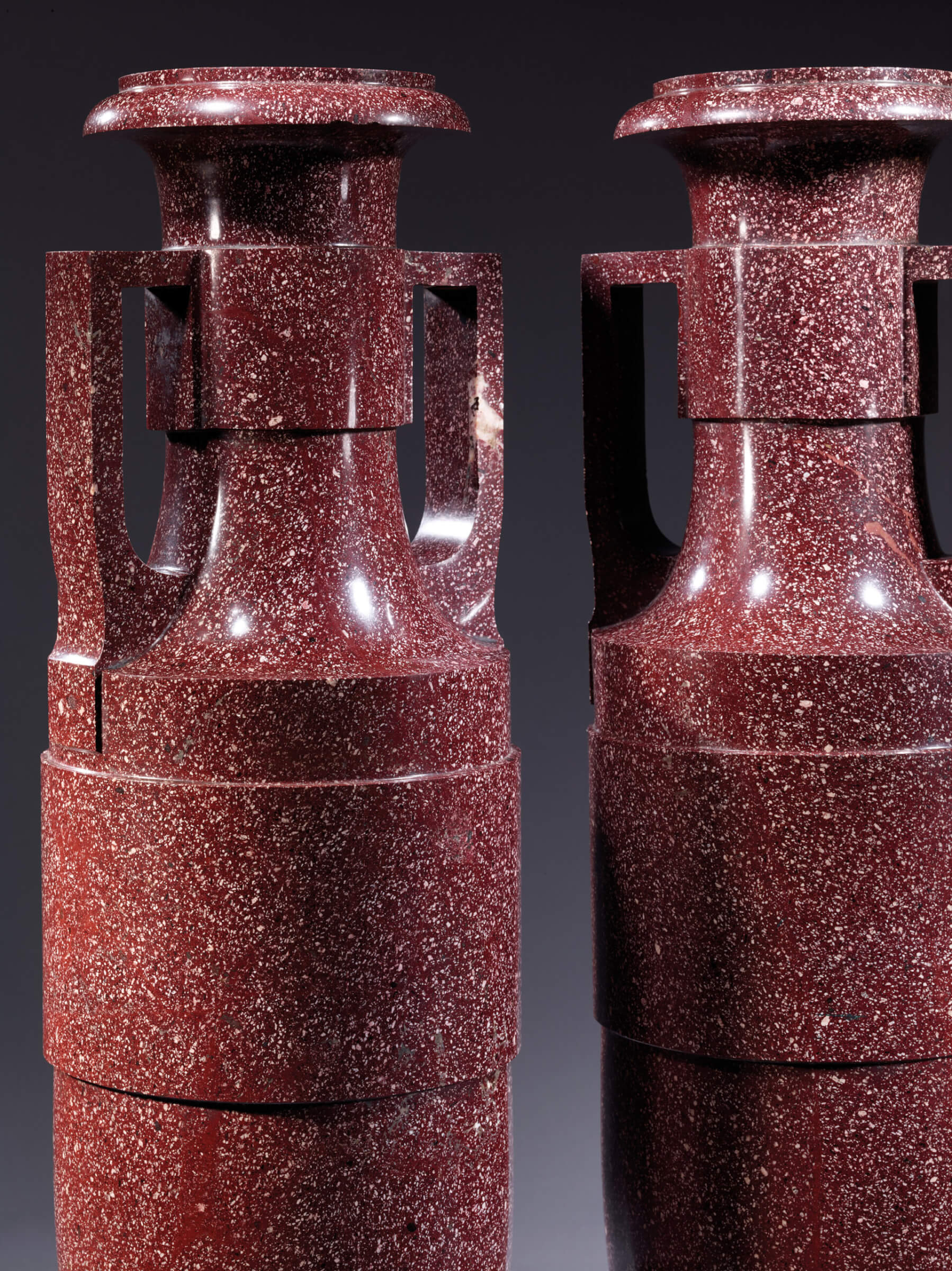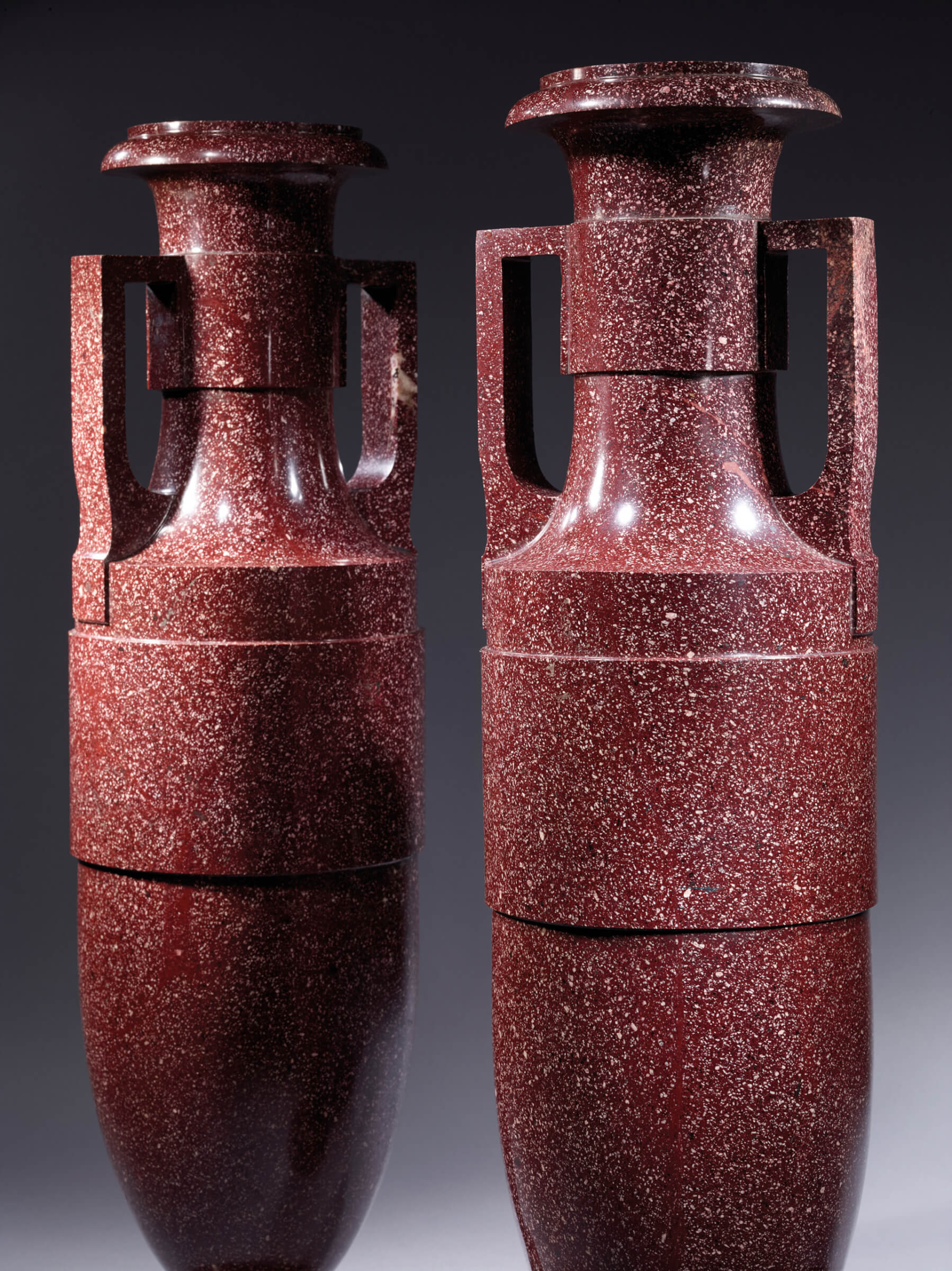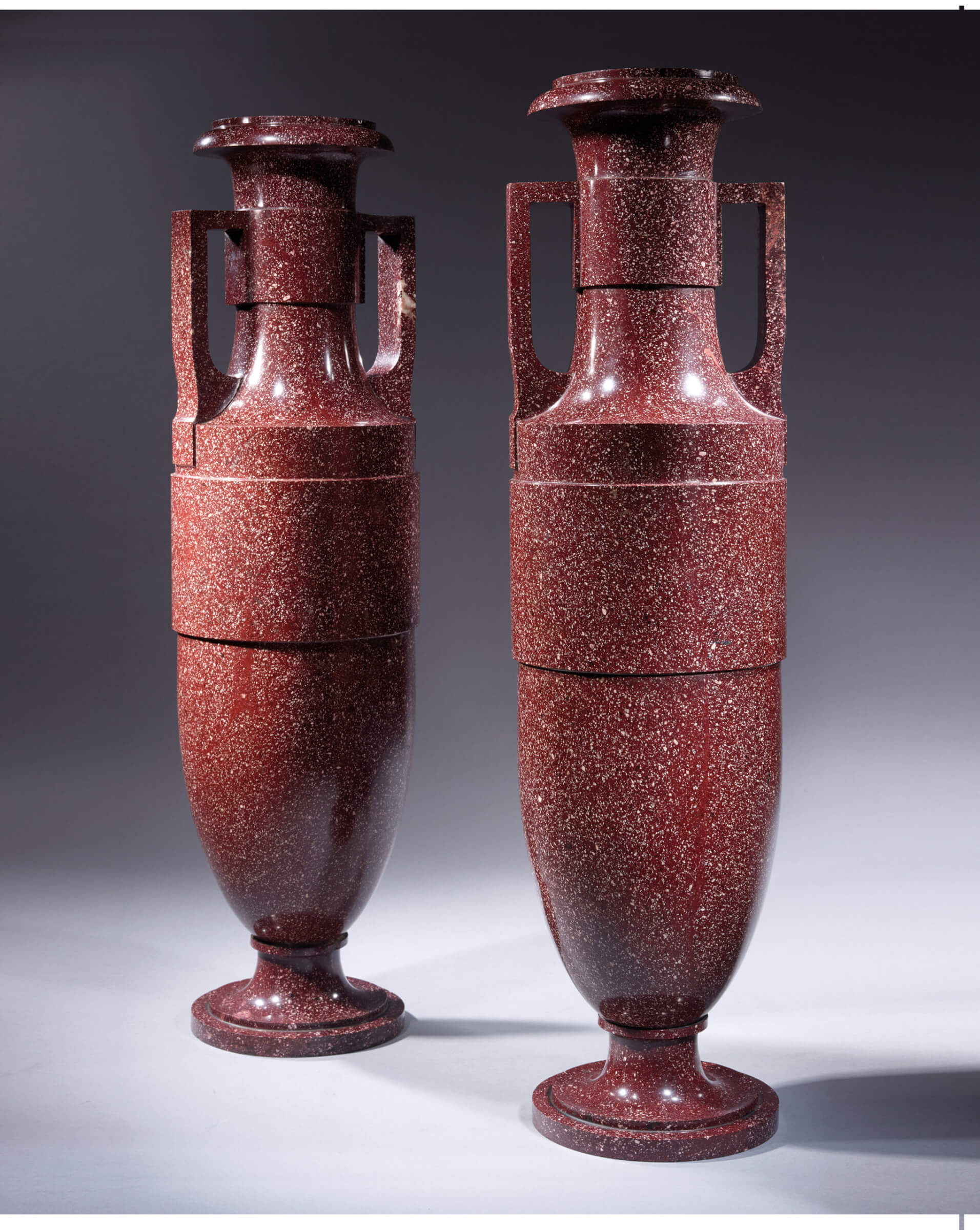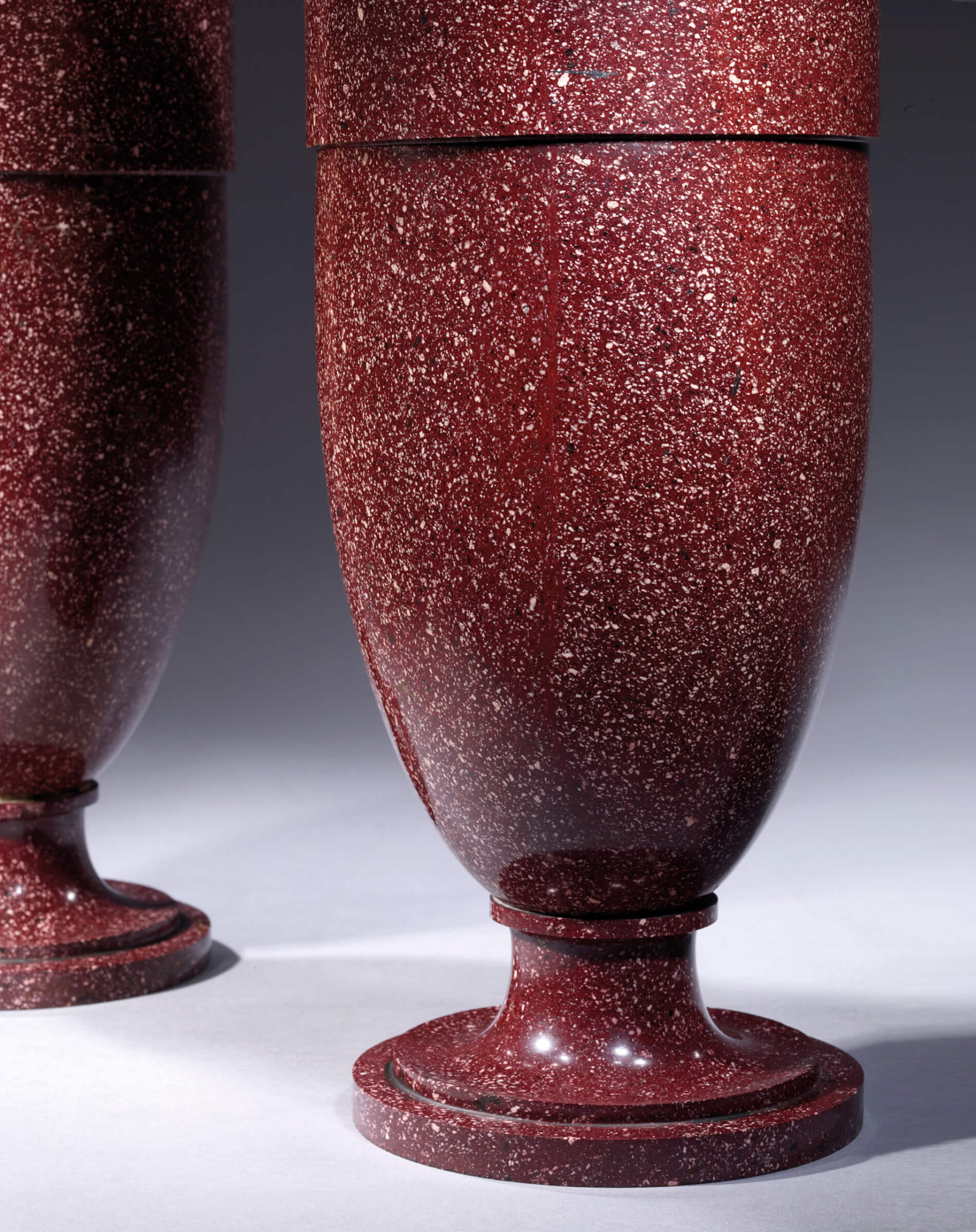

Porfido rosso antico
PROVENANCE: offered in 1813 by King Charles XIII of Sweden (1748-1818), along with four other vases—a red porphyry tazza, a monumental vase also in porphyry, and a pair of Swedish brown porphyry vases—to Lieutenant General the Honourable Sir Alexander Hope (1769-1837); placed by the latter in his London residence at 14 Curzon Street, Mayfair; then by descent, the collection of his son, George William Hope (1808-1863), Under-Secretary of State for War and the Colonies under Robert Peel from 1841 to 1846; collection of the latter’s son, the general’s grandson, Henry Walter Hope (1839-1913), who in 1888 transferred the vases from the Mayfair residence to Luffness House, the Hope family’s Scottish castle near the village of Aberlady in East Lothian; then by descent, the Hope family collection at Luffness House until 1923, when the vases were sold by order of the Trustees; anonymous auction in London, by Phillips, 7th June 1989, lot n°. 145; acquired by the gallery Didier Aaron Ltd., 21 Ryder Street, London; collection of Peter and Leonora Petrou; collection of Philip Hewat-Jaboor (1953-2022).
SOURCES: Edimbourg, Scottish National Record Office, Hope Papers: G. D. 364, 1021, B 155, B 188, B 761 and B 1249; London, The British Library: BL Add. Mss. 20111f. 15 and 200191ff. 210.
LITERATURE: Kondad O. Bernheimer, Kunst & Tradition, Meisterwerke bedeutender Provenienzen, Munich, 1989, p. 154-155, cat. 43, repr.; Dario Del Bufalo, Porphyry, Red Imperial Porphyry Power and Religion, Turin, 2012, p. 159, cat. V. 148, repr.
EXHIBITION: Grosvenor House Fine Art and Antiques Fair, London, 1989.
STATE OF CONSERVATION: these precious objects have remained in their original state and retained their original polish.
This imposing pair of ‘loutrophoros’-shaped vases in porfido rosso antico was presented as a diplomatic gift in 1813 by King Charles XIII of Sweden (1748-1818), along with four other vases—a red porphyry tazza, a monumental vase also in porphyry, and a pair of Swedish brown porphyry vases—to Lieutenant General the Honourable Sir Alexander Hope (1769-1837).This gesture on the part of the Sovereign marked the culmination of Hope’s diplomatic mission, which would result in the signing on 3rd March 1813 of the Treaty of Stockholm, a ‘treaty of concert and subsidy’ between Sweden and England. Signed by Hope and Sir Edward Thornton (1766-1852) for Great Britain and by Lars Von Engeström (1751-1826) and Gustaf af Wetterstedt (1776-1837) for Sweden, it secured Swedish military cooperation against Napoleon I in exchange for substantial subsidies, the cession of Guadeloupe that England had just taken from France, and the latter’s support for Swedish claims over Norway. Sweden, for her part, undertook to put an end to the slave trade, and also granted commercial rights in Gothenburg, Karlshamn and Strålsund to British merchants.




